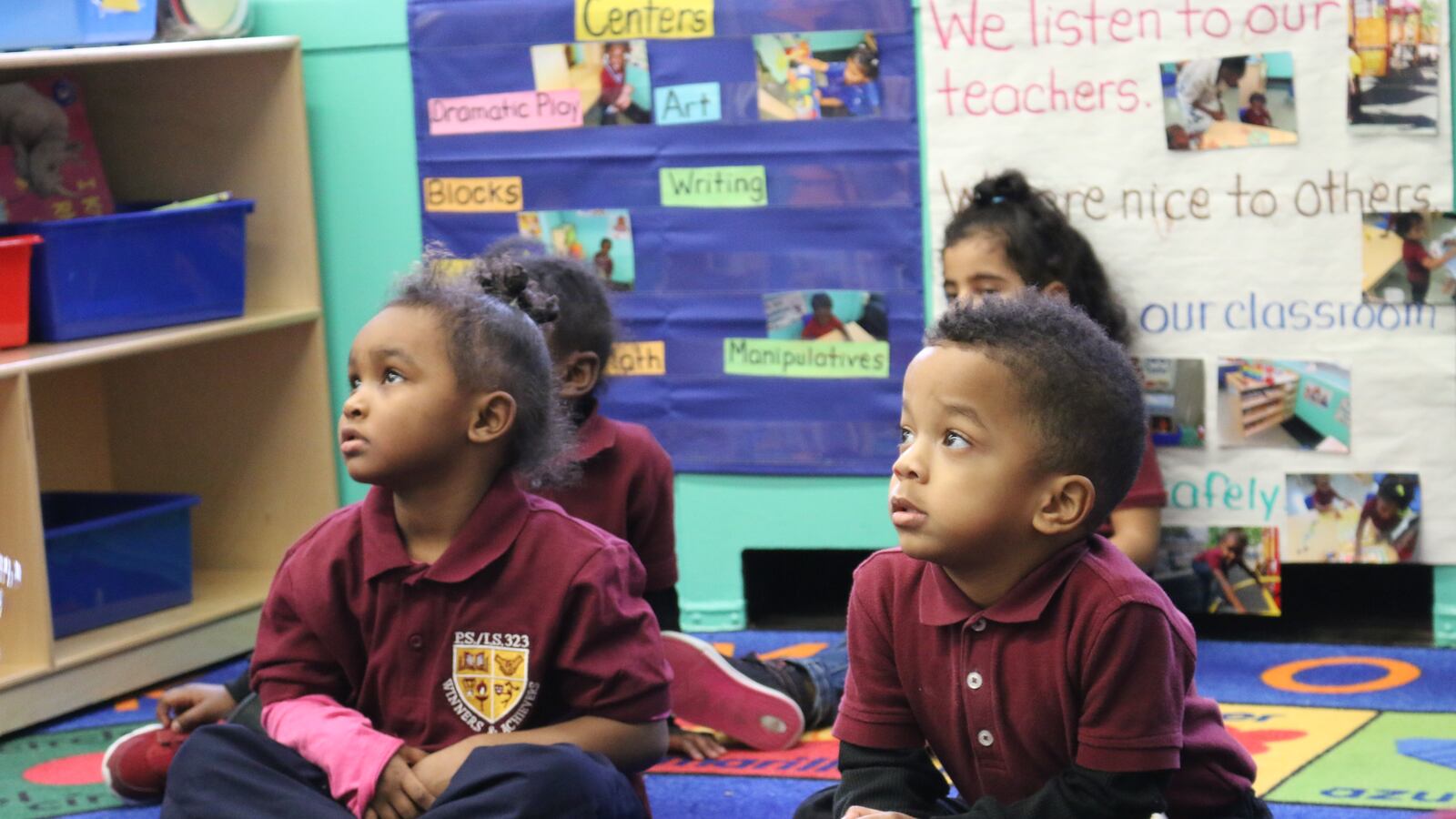As dual language classrooms expand across the five boroughs, the city’s youngest learners might be the newest group to get such programs.
Education department officials are “exploring the possibility” of piloting dual-language learning for 3-K, the free preschool program for the city’s 3-year-olds available in 12 districts, a department official confirmed. This comes on the heels of expanding dual language programs for the 4-year-olds in the city’s Pre-K for All program, which currently offers about 100 dual language programs. There are a total 671 bilingual programs in 13 languages from Pre-K through high school in New York City.
“We know it is something that school leaders are asking about and families are asking about,” Mayra Chong-Qui Torres, director of multilingual education within the department’s division of early childhood education, said during a meeting last month for Citywide Council on English Language Learners, a parent-led advisory body for students learning English as a new language.
Half of the children in dual language classes speak English at home, while the other half speak the “target” language. Students are taught in both. On top of offering Bengali, Italian, Mandarin, Spanish, and Russian, the city this year added French, Haitian-Creole, Hebrew, and Japanese for the pre-K program.
If the pilot launches, the city’s education department would most likely expand existing pre-K dual language programs that have 3-K classrooms, but officials said they are still in the early phases of figuring out details. School officials want to take a closer look at the existing programs to better understand what supports, coaching and other guidance would be needed to implement dual language for the younger learners.
“We are working with a small group of programs that serve a high number of (students learning English as a new language) at their school,” Chong-Qui Torres added. “They already have a pre-K dual language program, they’ve opened 3-K, and so they kind of want to build a future system.”
If the pilot moves forward, it could be “pioneering” on the part of the nation’s largest school district, said Ellen Frede, senior co-director at the National Institute for Early Education Research at Rutgers University. A handful of other school districts have dual language options available for 3-year-olds, such as Perth Amboy, N.J. and San Antonio, Frede said.
Dual-language immersion has been found to have some long-term academic benefits. One study found that kindergartners in a dual-language setting gained the equivalent of one year of reading instruction by eighth grade, compared to students who received English-only instruction.
While the biggest challenge is finding enough qualified teachers — a common roadblock for bilingual education— it’s still worthwhile, she said.
“If you have dual language for your 4-year-olds, then you absolutely should have dual language for your 3-year-olds because it doesn’t make sense to put them in English immersion and then put them into dual language (the next year),” Frede said, noting that having a 3-K option would make it a more “seamless transition.”
There is not a wealth of research on good dual-language instruction for very young children, noted Frede. And along with finding the right teachers, it will be critical to find the right teaching model, said Robert Slater, a senior fellow at the research center within the American Councils for International Education.
Because of their age, teaching 3-year-olds can require a different instructional approach than what’s needed for other students, Frede said. Teachers should ensure children understand what they’re referring to — so, pairing language with “concrete action and materials,” Frede said. The “sportscasting” technique is a typical one, she said: That is when a teacher narrates their own actions and the child’s. For example, that could involve the teacher talking to a student about a large tower he or she is building with blocks and describing the long rectangular piece they’re about to grab.
“You want to be doing this in both languages though because ‘rectangular’ is probably not a word they know in either language,” Frede said, simply because of their age. “It takes a lot of systematic approach to this.”
City education department officials said they were committed to dual language for pre-K students.
“Multilingualism and multiculturalism must be fostered and celebrated in classrooms from the very beginning,” department spokesperson Isabelle Boundy said in a statement.

